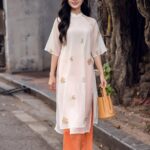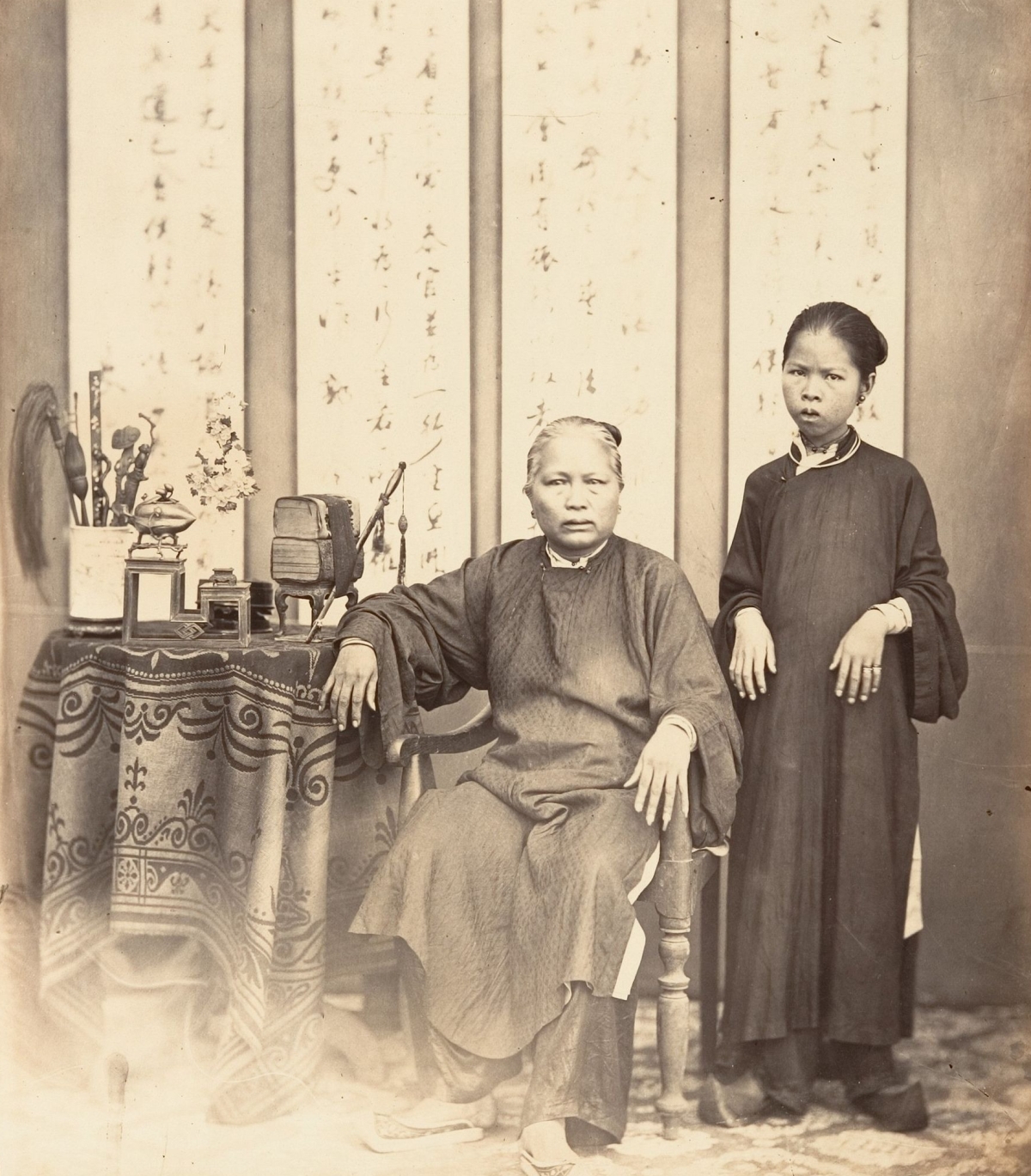
Two Saigonese women donning the elegant ‘ao dai’, a traditional Vietnamese dress with five panels of fabric, in a photograph taken by French photographer Émile Gsell in 1866. This image is currently exhibited at the renowned Met Gallery in New York, commemorating the city’s 150th anniversary. Image source: The Met
The ‘ao dai’ has been an integral part of Saigon’s fashion culture since the city’s inception in 1698. Its design has continuously evolved over the centuries, encompassing alterations in fabric choices, cuts, length and width of the flaps, necklines, and accompanying pants styles.
According to ‘Vietnamese History: Xứ Đàng Trong’ by Phan Khoang, covering the 18th and 19th centuries, the prevailing attire for Saigonese women was the ‘ngũ thân’ – a type of ‘ao dai’ comprising five pieces of fabric. It featured a high, straight, and square collar symbolizing rectitude, paired with long pants. Women typically wore low-collared ‘ao dai’ with slender and narrower sleeves, and flaps extending past the knees, often accompanied by a ‘yem’, a traditional Vietnamese bodice. The colors and patterns varied according to the occasion: red and pink for weddings, and black or brown for daily life.
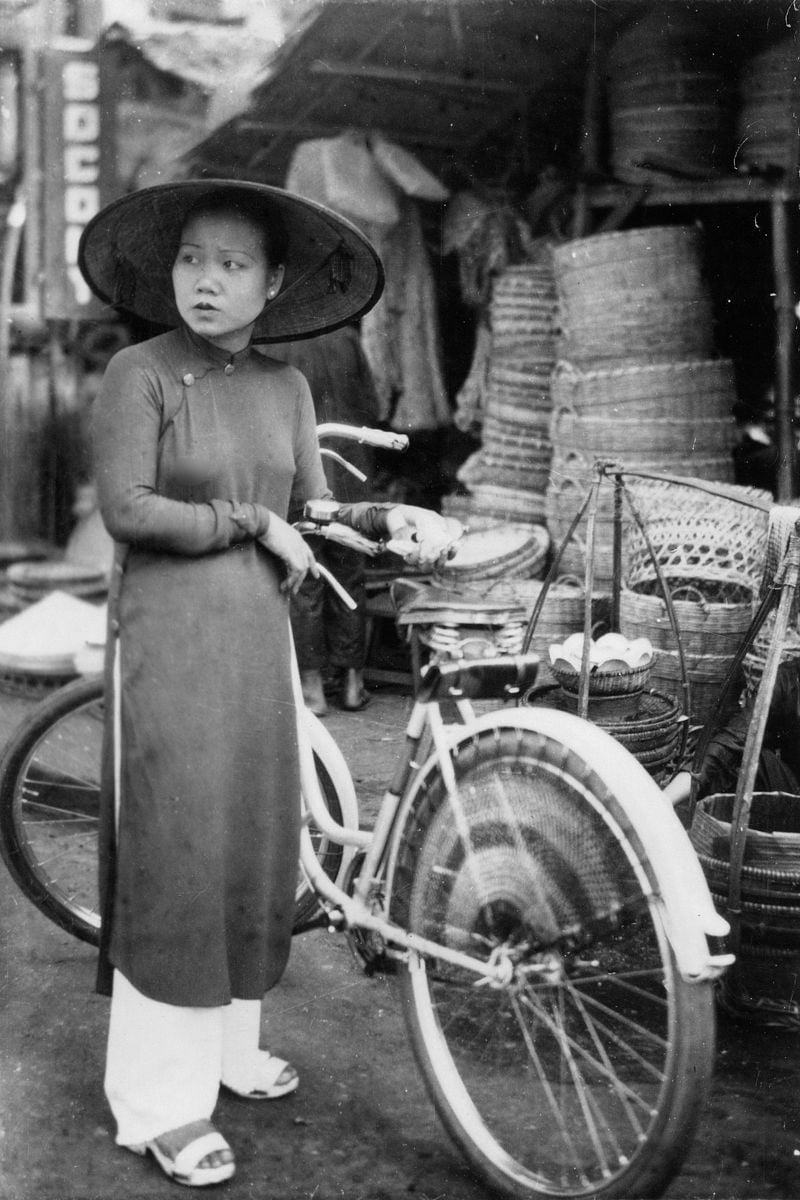
During the 1910s and 1930s, the ‘ao dai’ remained a staple in everyday life. The flaps were shortened for practicality in labor and daily activities. Instead of wearing embroidered shoes from the Nguyen dynasty, many opted for ‘guoc Saigon’ – clogs with a strap nailed across the five toes. Image source: Archive
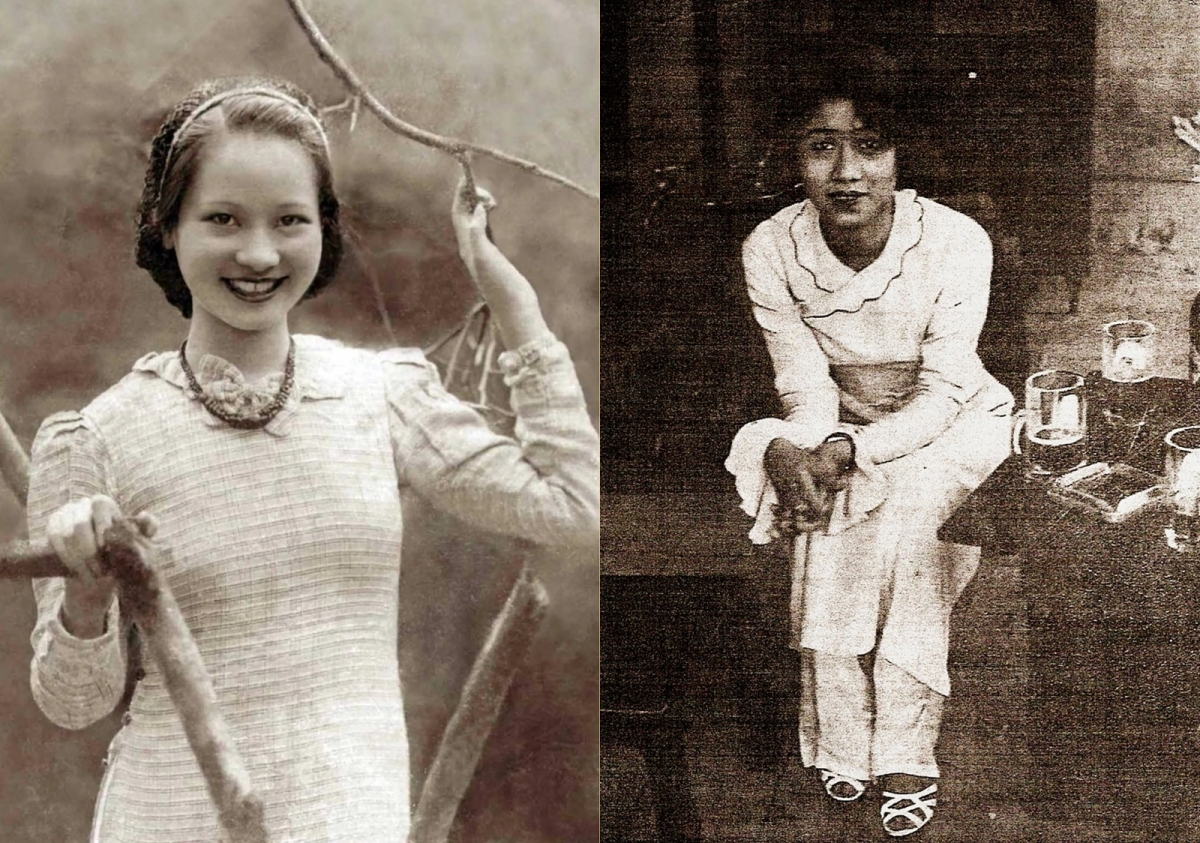
In the mid-1930s, artist Nguyen Cat Tuong spearheaded a revolution in ‘ao dai’ design. He crafted numerous styles, including collarless, short-sleeved, sleeveless, puffed shoulders, flared cuffs, buttonless, and short flaps, collectively known as ‘ao dai Lemur’ (French for ‘wall’). This Westernized version was embraced by progressive women until the late 1940s. By the early 1950s, the ‘ao dai Lemur’ had faded from popularity. Image source: Archive
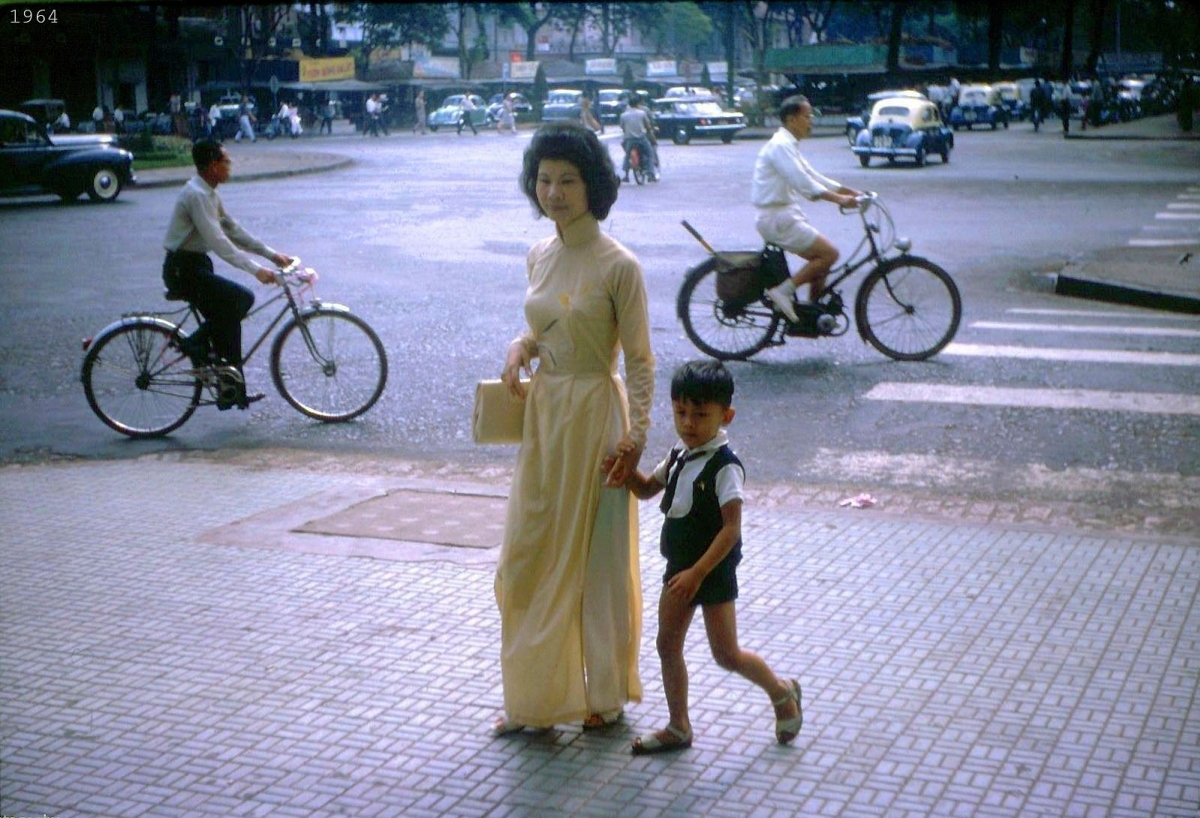
The 1950s witnessed a boom in ‘ao dai’ popularity, with an array of styles emerging. Designs became more daring, featuring waist-cinching and body-hugging cuts. High collars also accentuated the wearers’ figures.

Towards the end of this decade, the ‘ao dai’ incorporated new neckline styles, including the bateau and sweetheart necklines, inspired by the attire of Madame Tran Le Xuan, wife of Ngo Dinh Nhu, a prominent political advisor during that era. Image source: Archive
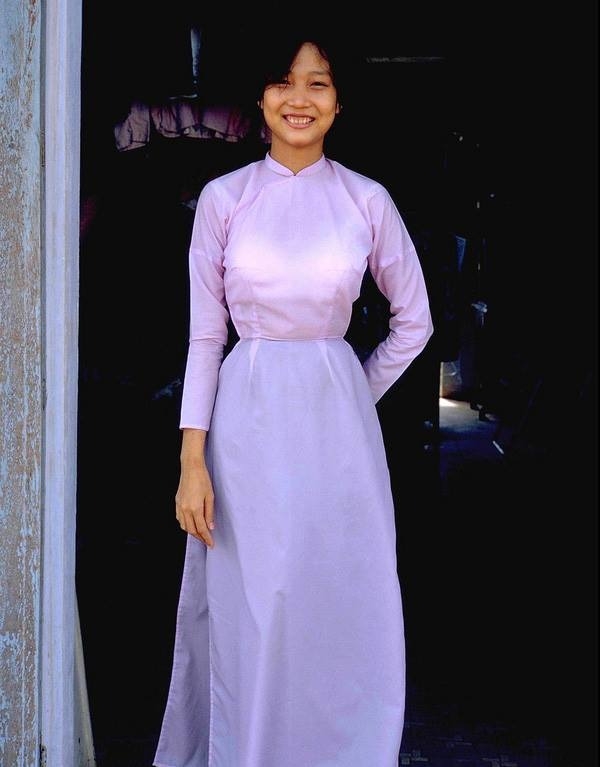
In 1958, the ‘ao dai raglan’ made its debut, thanks to Do Thanh, owner of the Dung Dakao tailor shop. This design was characterized by three-quarter-length sleeves, a tightly cinched waist, and a low collar. To prevent wrinkles on the shoulders, Mr. Thanh incorporated the raglan sleeve construction from Western suits into the ‘ao dai’. He also organized an ‘ao dai’ fashion show in 1959 at the Grand Monde and Arc-en-Ciel theaters to promote this innovative style. Artifacts of ‘ao dai’ crafted by Mr. Thanh for his daughter and daughter-in-law were exhibited at the Ao Dai Museum in 2014. Image source: Archive

In the late 1960s, influenced by the hippie culture that originated in the US and spread worldwide, the ‘ao dai hippy’ emerged. This style featured narrow and knee-length flaps, a loose-fitting body that eliminated waist cinching, and a low collar. The raglan shoulder construction was utilized for a softer fit, and the outfit was paired with extremely wide-legged pants, up to 60 cm in width. This design remained popular until the mid-1990s. Image source: Archive

In the 1970s, the trend shifted back to tightly cinched waists. Young women often wore corsets to achieve an extreme hourglass figure. The ‘ao dai’ of this period was crafted from a variety of materials, including synthetic fabrics and vividly patterned textiles. The accompanying silk pants were tailored with a moderate width, striking a balance between elegance and modernity. Women accessorized their ‘ao dai’ with sunglasses, gloves, and kitten heels when stepping out. Image source: Archive

Le Doan Phuong Uyen, a dancer and beauty queen, showcases designer Si Hoang’s ‘Ao Dai Vong Xoay’ during the inaugural ‘Healthy – Fashion – Sports’ competition held in Ho Chi Minh City in 1991. Image source: Truc Lam
In the early 1990s, Ho Chi Minh City’s ‘ao dai’ underwent a transformation thanks to fashion designers Si Hoang and Minh Hanh. While Minh Hanh incorporated ethnic minority textiles into the flaps, Si Hoang showcased his painting skills through intricate drawings and coloring on the garments. The ‘ao dai’ of this period retained traditional elements, including high collars and long flaps that reached or exceeded knee length, paired with moderately wide silk pants. The waist was gently accentuated rather than tightly constricted as in the 1970s.

In the early 2010s, designer Cong Tri infused new life into the ‘ao dai’ by employing digital printing techniques (left) instead of manual painting as done by Si Hoang. He also introduced innovative flaps that extended to the floor.
Fast forward to the 2010s (remaining three images), and the ‘ao dai’ underwent a radical transformation, incorporating elements from Western attire. Women now have a plethora of options, including puffed shoulders, plunging necklines, sheer fabrics, lace, mesh, beaded, sequined, or hand-embroidered ‘ao dai’, 3D flower appliques, and laser-cut details.
The accompanying pants are no longer limited to wide-legged silk pants but can be replaced with jeans, tailored pants, or even a maxi skirt. Image source: Provided by the subjects
Cong Tri garnered acclaim with his ‘Coco Yeu Dau’ collection in 2018, which masterfully blended tweed jackets with ‘ao dai’. Video source: Provided by the subject
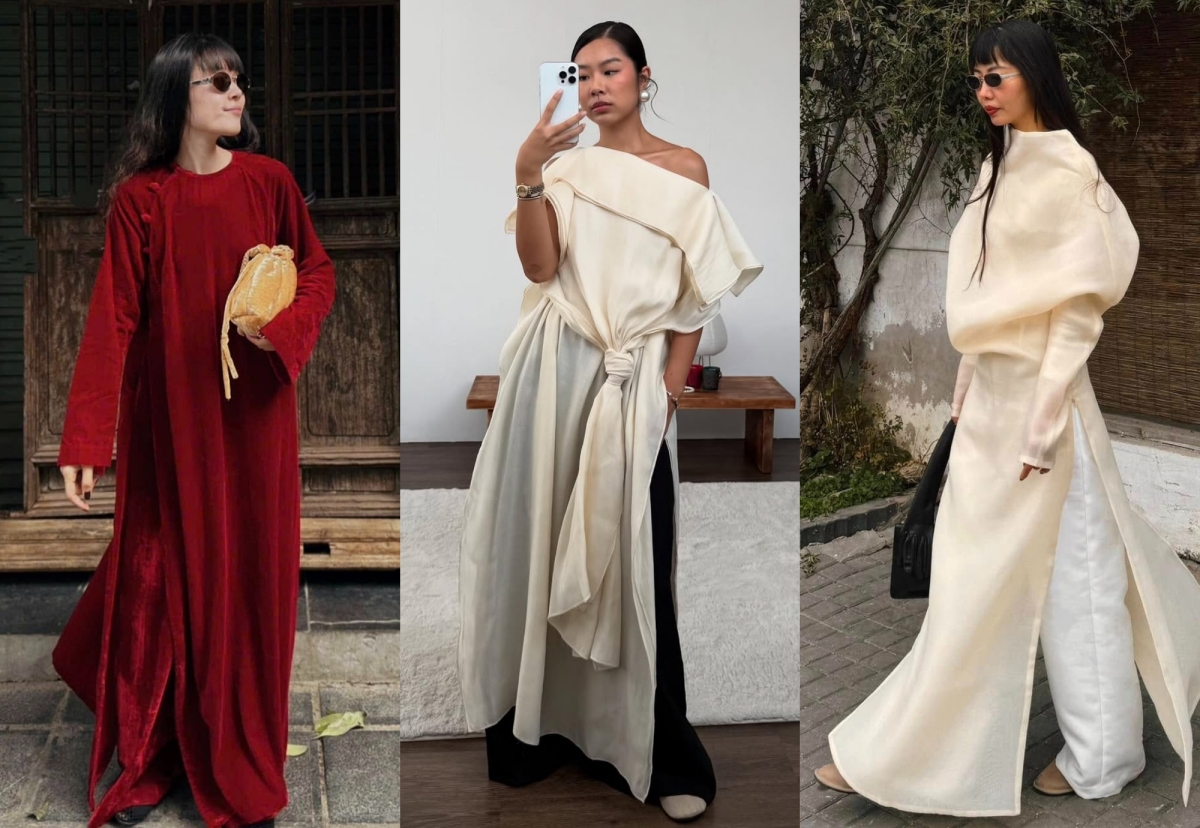
In the 2020s, the ‘ao dai’ continues to evolve, fueled by the creativity of Gen Z designers. There seem to be no boundaries when it comes to innovation. Catering to the younger generation’s preference for comfort, the silhouette has become more relaxed in recent years, eliminating waist nipping and incorporating flared cuts. While some brands promote the traditional ‘ao dai’ of the 1930s, others embrace deconstruction with asymmetrical shapes, avant-garde layering, and bolder cutouts. Image source: H2B, Mare


























